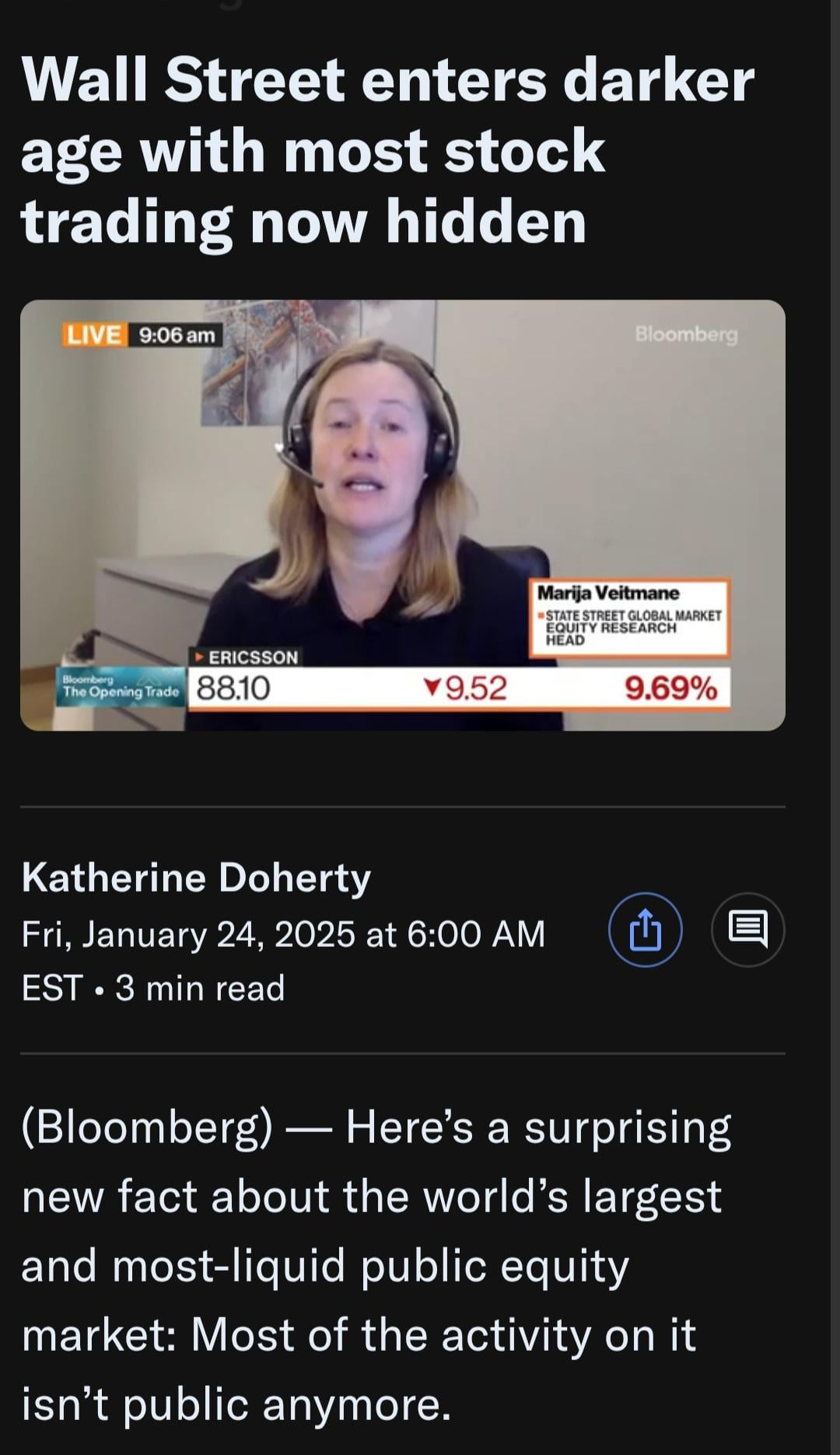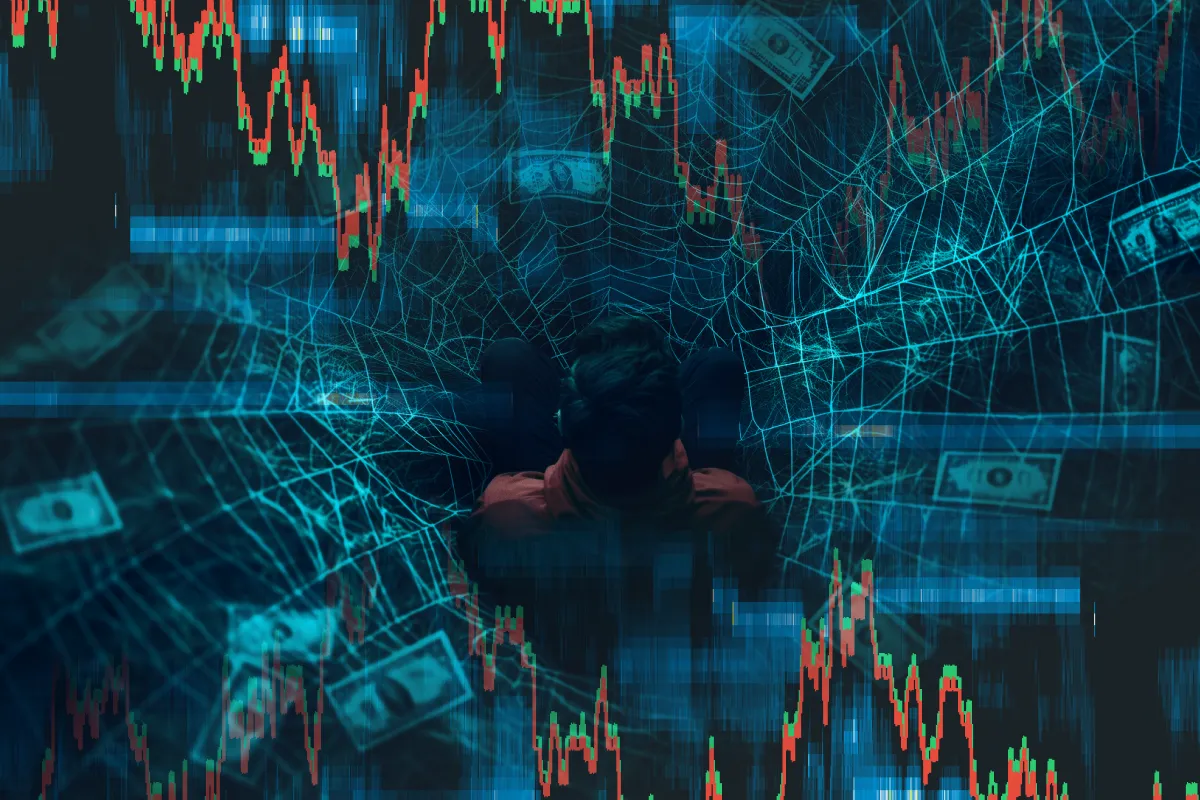Did you know that dark pools can make even the most seasoned traders feel like they're trying to find a needle in a haystack? In this article, we dive deep into the signs of dark pool activity on stock charts, offering insights on how to spot it effectively. You'll learn about the significance of unusual volume spikes, the impact of large block trading, and specific chart patterns associated with dark pools. We also discuss how these hidden venues influence price movements, market liquidity, and short-term trends. Understanding these factors can help you navigate the complexities of trading and avoid the pitfalls of ignoring dark pool activity. Join us at DayTradingBusiness as we unravel the mysteries of dark pools and empower your trading decisions.
How can I spot dark pool activity on stock charts?
Look for sudden, large volume spikes that don’t match the stock’s typical trading pattern. Check for wide bid-ask spreads or unusual price pauses around certain levels. Notice if the price moves sharply without corresponding visible trades; dark pool trades often don’t appear on regular charts. Watch for volume surges during off-hours or after-hours trading. Sometimes, price stabilizes or consolidates just before a big move, hinting at dark pool activity. Use dark pool indicators or level II data for more clues, but chart patterns showing large, silent volume shifts are key signs.
What do unusual volume spikes indicate about dark pool trading?
Unusual volume spikes in dark pool trading indicate large institutional orders being executed away from public markets. These spikes suggest significant hidden buying or selling activity that can signal upcoming price moves or shifts in market sentiment. They often precede or coincide with sudden price changes, revealing institutional interest not visible in standard chart patterns.
How does dark pool activity affect price movements?
Dark pool activity can cause sudden, unexplained price jumps or drops, often with little visible volume in regular order books. Look for large trades executed away from public exchanges, which can lead to sharp price moves without typical pre-trade indicators. These trades might trigger quick price spikes or dips that don’t match overall market activity, signaling dark pool influence.
Are there specific chart patterns linked to dark pools?
Yes, dark pool activity often shows up as sudden, large volume spikes without price movement or minimal price change, creating a "volume blot" on the chart. These can appear as unusual volume surges during sideways trading or small price ranges, indicating hidden buying or selling. Sometimes, you’ll see a series of large trades that don’t impact the chart price, signaling dark pool activity.
What does large block trading suggest about dark pool activity?
Large block trading often indicates increased dark pool activity, as big institutional trades are executed quietly outside public markets. When you see sudden, sizable trades on the chart without corresponding public order flow, it suggests institutions are using dark pools to buy or sell large positions discreetly. This activity can cause hidden shifts in supply and demand, signaling potential price moves before they appear publicly.
How can dark pools influence short-term price trends?
Dark pools can cause sudden, hidden price movements that aren’t visible on regular charts. Large, unexplained volume spikes or abrupt price jumps often signal dark pool activity. These trades can temporarily skew short-term trends, making prices move sharply before public markets react. Watch for unusual volume spikes without clear news—they often point to dark pool executions affecting short-term price direction.
What role do dark pools play in price gaps?
Dark pools can cause price gaps when large trades executed there are revealed on the public market, skipping the typical order book. These hidden orders can lead to sudden jumps or drops in stock prices once the trades are disclosed, creating noticeable gaps on charts. Sharp price gaps around certain times may signal dark pool activity influencing the market.
Can order flow indicators reveal dark pool activity?
Order flow indicators can hint at dark pool activity when you see unusual order book gaps, sudden large block trades, or low visible bid-ask volume despite price moves. These signs suggest institutional trading away from public exchanges, often characteristic of dark pools. However, they don’t directly reveal dark pool activity but can indicate its presence indirectly through atypical trading patterns.
How do dark pools impact market liquidity on charts?
Dark pool activity shows up on charts as large, sudden volume spikes without price movement, indicating hidden trades. These can cause volume anomalies or subtle price shifts before public markets react. Look for heavy volume without typical price action—sharp jumps or drops that don’t match the visible market trend. These signs suggest dark pools are executing large orders discreetly, impacting overall market liquidity.
What are the warning signs of hidden trading in dark pools?
Sudden, unexplained spikes in trading volume without price movement, large trades that don't impact the market, and inconsistent bid-ask spreads can signal dark pool activity. Watch for abrupt volume surges during quiet market times or when the price remains stable. If a stock shows frequent large block trades not reflected in the chart, it's a sign of hidden trading in dark pools. These signs suggest institutional traders are executing large orders away from public markets.
How does dark pool activity differ from regular exchange trading?

Dark pool activity shows up as large, off-exchange trades that don’t appear on regular stock charts. These trades don’t impact the public order book, so they don’t cause visible price moves like regular exchange trading. When dark pool activity increases, you might see sudden, unexplained volume spikes or price gaps that aren’t matched by public order flow. Swings in liquidity and unusual volume without corresponding price changes are common signs. These activities can hide true supply and demand, making charts less transparent.
Learn about How Do Dark Pools Differ From Regular Exchanges?
Are there technical signals that suggest dark pool manipulation?
Yes, signs of dark pool manipulation include sudden, large block trades that don’t match public order flow, hidden volume spikes, price movements that diverge from overall market trends, and abrupt changes in trading volume without news. Look for periods where volume surges without corresponding price action, or where prices jump or drop sharply during low liquidity, indicating possible dark pool activity.
How does dark pool activity show up during high volatility?
During high volatility, dark pool activity often shows up as unusual spikes or volume surges not reflected in the public order book. You might notice discrepancies between the price movement and visible trading volume on the chart. Large block trades executed outside regular exchanges can cause sharp price moves without corresponding on-screen activity, hinting at dark pool activity. These trades can lead to sudden breakouts or dips that aren't backed by visible order flow.
Can volume analysis help identify dark pool trades?
Volume analysis can hint at dark pool trades when you see unusual spikes or hidden volume that doesn't match price movements. Dark pools often cause large, discreet block trades that don't immediately reflect in the visible order book, leading to volume surges without clear chart signals. If volume suddenly jumps without a corresponding price change or usual market activity, it might indicate dark pool activity. Look for discrepancies between visible volume and price action—these can be signs of dark pool trades influencing the market behind the scenes.
What are the risks of ignoring dark pool activity in chart analysis?
Ignoring dark pool activity in chart analysis can lead to missing hidden supply or demand shifts, causing misreads of price trends. It might cause you to overlook large institutional trades that influence price movements, making your analysis less accurate. Without accounting for dark pools, you risk entering or exiting trades too early or late, based on incomplete data. This oversight can result in reduced profits or increased losses, especially when dark pool activity signals a significant upcoming price move.
Conclusion about What Are the Signs of Dark Pool Activity in Charts?

In summary, recognizing dark pool activity in stock charts is crucial for informed trading decisions. Indicators like unusual volume spikes, large block trades, and specific chart patterns can reveal hidden trading dynamics. Understanding how dark pools influence price movements, market liquidity, and short-term trends enhances your analysis. Ignoring these signs can expose traders to significant risks. For more insights and strategies on navigating dark pool activity, DayTradingBusiness is here to support your trading journey.